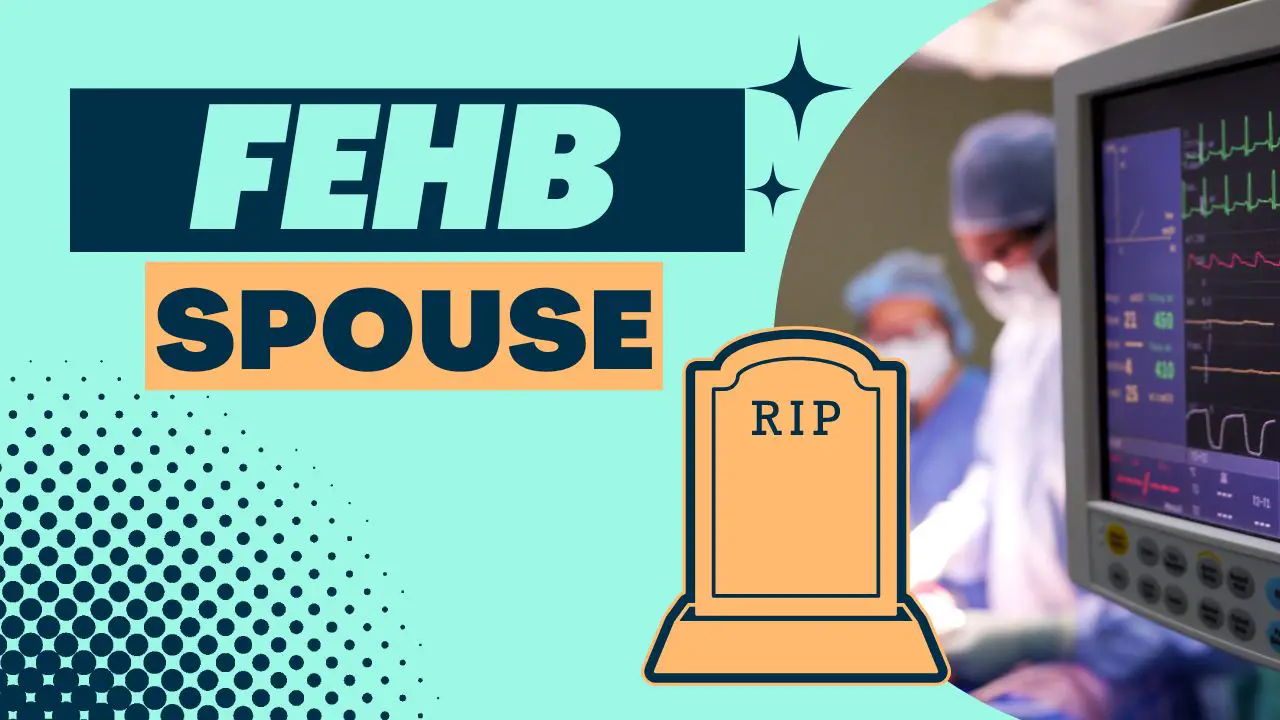Picture this. Your spouse has passed away, and you’re left with a mountain of bills and uncertainty about your financial future. You want to have time and space to grieve the loss of your spouse, but instead are having to figure out how to pay the bills.
It’s a nightmare scenario.
However, as the spouse of a federal employee, you may be entitled to survivor benefits. Knowing how to claim your survivor benefits can help ease the burden during this difficult time.
In this guide, I’ll provide you with step-by-step instructions on how to claim survivor benefits after your federal spouse’s death. Let’s get started.
Get Gov Worker’s top 4 tips for federal employees!Table of Contents
- FERS Survivor Benefits
- Health Insurance- the most important part in choosing a survivor benefit.
- Eligibility: Who is eligible for survivor benefits, including former and current spouses.
- Applying for FERS Survivor Benefits
- Frequently Asked Questions about FERS Survivor Benefits
Please do not confuse my personal blog for financial advice, tax advice or an official position of the U.S. Government. This post may contain affiliate links. If you make a purchase after clicking on a link, I get a small percentage of the sale at no additional cost to you.
FERS Survivor Benefits
As a FERS employee, your spouse may be entitled to survivor benefits after you pass away. The survivor benefit is a monthly payment that is calculated based on your FERS pension. The amount of the survivor benefit varies depending on the option chosen by the employee at the time of retirement.
(I am focusing on the Federal Employee Retirement System (FERS) in this article. If you’re part of the older, Civil Service Retirement System (CSRS), you will have different retirement options).
As a FERS employee you have 3 options for selecting a survivor benefit when you retire: full, reduced, or none.
- Full survivor benefit: Your spouse gets 50% of your unreduced annuity amount. This reduces your monthly pension payment by 10%.
- Reduced survivor benefit: Your spouse gets a reduced annuity equal to 25% of your unreduced annuity amount. This reduces your monthly pension payment by 5%.
- No survivor benefit: Your spouse gets nothing when you pass away.
What is your “unreduced annuity amount”?
As a FERS employee, your unreduced annuity amount is calculated by:
1% x (Years of Service) x (Average of your highest 3 years of salary)
So if you worked for 30 years and retire with a salary of $100,000, your annual unreduced annuity would be $30,000 per year or $2,500 per month.
If you choose the full survivor benefit, you’d receive $2,250 per month ($2,500-$250).
Health Insurance- the most important part in choosing a survivor benefit.
Keeping your FEHB in retirement is a huge benefit– I calculated it’s worth over $400,000.
So if you’re planning on keeping FEHB in retirement, you’ll want to make sure your deceased spouse can get those benefits as well.
I wrote a whole post about the ins and outs of keeping FEHB when your federal spouse dies. But I can’t emphasize this enough, you need to have selected a survivor benefit (either full or reduced) to keep that benefit in retirement.
Eligibility: Who is eligible for survivor benefits, including former and current spouses.
Eligibility for survivor benefits can be confusing, especially if you’ve gotten divorced or remarried. Here’s what you need to know:
- If a federal retiree’s spouse dies first, the survivor benefit reduction from the your FERS annuity stops but you are not reimbursed for the reductions you took while he or she was still alive.
- If a federal employee gets married after retiring, survivor benefits can be added to a federal retiree’s pension income, as long as the change is made within two years of the marriage. This results in two reductions to the income: the standard reduction that pays for the survivor benefit, and an actuarial reduction that typically results in less than 5% of the unreduced annuity amount. The second reduction is permanent, even if the marriage ends.
- If a federal retiree remarries the same person after retirement and the couple previously elected to waive the survivor benefit, they are not allowed to add a survivor benefit that is greater than the selection made upon retirement during their first marriage.
- If a federal retiree gets divorced after retiring, the ex-spouse may still be eligible for survivor benefits, but there needs to be a court order in place that explicitly states this, and it can only be for the survivor benefits option that was selected. So, if the benefit was waived when the retiree was married, it cannot be added upon a divorce that happened post-retirement.
- With a qualifying court order, an ex-spouse may be entitled to FERS survivor benefits if the divorce happened while the federal employee was still in service. Such a court order can only be altered before the federal employee retires or dies.
Applying for FERS Survivor Benefits
To apply for FERS survivor benefits as a surviving spouse, you will need to gather the following documents and complete the necessary forms:
- Death certificate
- Marriage certificate
- Form SF-3104 (Application for Death Benefits) if your spouse was a retiree or SF-3104B if they are a current employee who died while working for the federal government.

You may also need:
- Military discharge paperwork.
- Children’s birth certificates if you have minor children and are applying for benefits on their behalf.
- Social Security Award Determination- if you have minor children or you as the former spouse are under age 60 and eligible for social security benefits due to the death of your spouse.
- Court documentation- if you are applying as the executor of the state or guardian of minor/disabled children.
Step-by-step guide to the application process
- Gather all the required documentation mentioned above.
- Complete the appropriate application form (SF-3104 or SF-3104B) based on the employment status of the deceased.
- Make copies of all the documents and forms for your records.
- Submit the application packet to
- The deceased’s agency’s human resources office if they were a current employee (SF-3104B)
- Or directly to OPM if they were a retiree. You can find the OPM mailing address on the application form. The current address is:
- Retirement Operations Center
ATTENTION: Survivor Processing Section
Post Office Box 45
Boyers, Pennsylvania 16017-0045
Frequently Asked Questions about FERS Survivor Benefits
Are OPM survivor benefits taxable?
Yes, survivor benefits paid by the Office of Personnel Management (OPM) are generally taxable income- although there are some exceptions. See IRS publication 721 for full details.
Can I continue my health insurance coverage after my federal spouse’s death?
Surviving spouses may be eligible to continue their health insurance coverage through the Federal Employees Health Benefits (FEHB) program if there was a survivor annuity selected. If not, you may be able to continue coverage for a short period of time with a continuation of benefits.
What happens after I apply for FERS survivor benefits?
After you submit your application, it can take anywhere from a few weeks to a few months for OPM to process your claim. During this time, you may be eligible for interim payments. Once OPM processes your claim, they will notify you of the decision and the amount of your survivor benefit.




